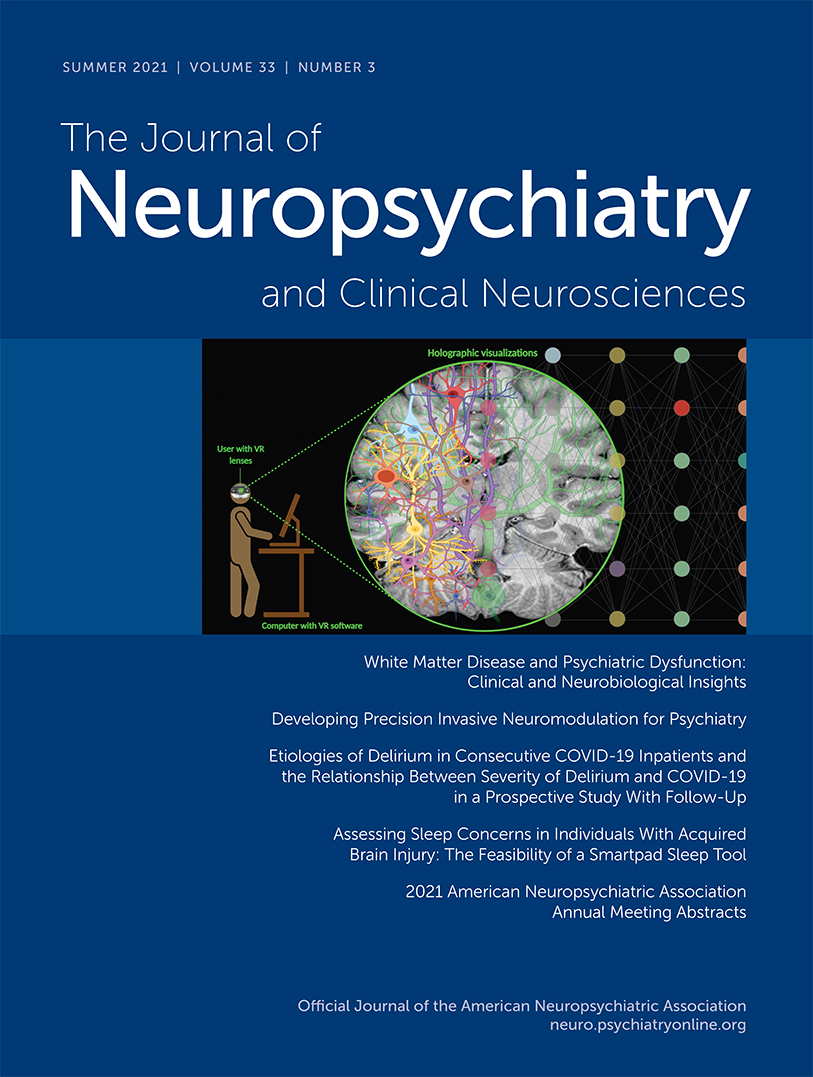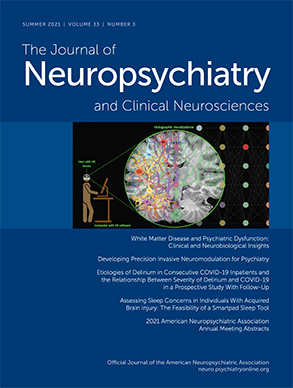The Quest for Biomarkers
Biomarkers are the holy grail of medical classifiers, but unfortunately, they are often elusive or found only in certain conditions. Examples of sleep disorders that can be reliably diagnosed based on biomarkers include fatal familial insomnia and type 1 narcolepsy (with cataplexy). It has been established that type 1 narcolepsy is caused by an irreversible loss of orexin/hypocretin neurons and can be diagnosed based on clinical presentation and low CSF orexin/hypocretin levels (
8,
10). However, both fatal familial insomnia and type 1 narcolepsy are very rare.
Researchers have embarked on extensive efforts to identify putative biomarkers for other sleep disorders, including insomnia. These research efforts include genetic studies ranging from familial inheritance to genome-wide studies, EEG, and structural and functional neuroimaging. Unfortunately, no promising candidate biomarkers with high sensitivity and specificity for insomnia have emerged to date. For example, a truly impressive genome-wide analysis on insomnia studied 1,331,010 individuals and identified 202 loci, implicating 956 genes and functional pathways (
52). Not unexpectedly, the researchers found considerable genetic correlation of insomnia with psychiatric traits; moreover, meta-analysis only explained 2.6% of the variance. Another study with over 450,000 subjects found 57 loci that are related to subjective insomnia complaints (
53). Shared genetic factors were found between frequent insomnia symptoms and nonspecifically with restless legs syndrome, aging, as well as cardio-metabolic, behavioral, psychiatric, and reproductive traits. Hence, at the present time, no specific gene, gene product, or “insomnia chip” has been shown to be clinically useful for the diagnosis of insomnia disorder.
Polysomnography (PSG) is the gold standard measurement of sleep, but is not currently required for the diagnosis of insomnia (
2). However, it may be used to rule out other sleep disorders like obstructive sleep apnea, for which insomnia could be a symptom (
11). In a study involving 76 individuals with primary insomnia and 78 normal sleepers, PSG was shown to lack the sensitivity and specificity for identifying insomnia disorders (
54). A recent meta-analysis of polysomnographic studies showed that individuals with primary insomnia exhibit statistically significant impairments in sleep continuity and sleep architecture as compared with normal sleepers (
55). However, these differences were not particularly pronounced (e.g., an additional 6 minutes more to fall asleep on average) (
56), and may have limited clinical utility.
One putative objective biomarker that is already in popular use now is wrist actigraphy, which is accessible to the general public. Wrist actigraphy records the occurrence and degree of limb movement activity over time, which can provide objective information on the sleep habits of patients in their home environments over multiple nights (
57). One major drawback of actigraphy is that it provides only an indirect measure of sleep: For example, if the patient is lying down quietly while trying to sleep, actigraphy may not capture this as an awake state (
58). Current clinical guidelines do not recommend the routine use of actigraphy in the assessment of insomnia, except potentially in ruling out other sleep disorders (
11,
56,
59). In two sequential studies, Natale et al. (
58,
60) investigated the usage of actigraphy in the evaluation of insomnia, using different actigraphy devices. While each study found significant differences in various objective sleep parameters between normal sleepers and insomnia patients, the quantitative actigraphic criteria obtained in the two studies were not the same. Therefore, there is a need for methodological and technological standardization before actigraphy data can be considered for incorporation into the diagnostic criteria for insomnia disorder.
A number of validated self-report questionnaires are recommended as complementary tools in the assessment of insomnia, such as the Insomnia Severity Index and the Pittsburgh Sleep Quality Index (
2,
56). As the sleep diary is a frequently used tool in clinical practice, a panel of experts recently sought to standardize it by developing the Consensus Sleep Diary (
61). A recent study examining its psychometric properties has provided preliminary evidence for its validity, clinical utility, and usability (
62), although more independent research is required. While these instruments provide objective and/or quantifiable scores that can be tracked over time, they are currently not required for the diagnosis of insomnia disorder. It is possible that in a bid to remain agnostic and impartial, professional bodies are reluctant to endorse the usage of one instrument or another in formal diagnostic criteria.
Data-Driven Insomnia Subtypes
Although current classification systems have eliminated insomnia subtypes due to a lack of empirical evidence, the discovery of valid insomnia subtypes may theoretically provide valuable information that can drive personalized treatment approaches. Instead of attempting to fit data into preconceived insomnia subtypes, a recent trend in insomnia research seeks to derive insomnia subtypes directly from data using cluster analyses. For instance, Miller et al. (
63) derived at least two clusters from objective sleep parameters obtained from polysomnography: insomnia with normal objective sleep duration and insomnia with short sleep duration. Using a combination of objective polysomnographic measures and subjective self-report instruments, Crawford et al. (
64) obtained three symptom cluster profiles: high subjective wakefulness, mild insomnia, and insomnia-related distress, with unique covariates (e.g., age and obesity) associated with each profile.
In a study involving about 4,500 participants, Blanken et al. (
65) identified five novel insomnia disorder subtypes using a multidimensional set of nonsleep characteristics, such as life history, affective traits, and personality. The researchers validated their five-subtype model in a nonoverlapping sample and found a 0.87 probability of subtype stability after a mean follow-up of 4.8 years. They also extensively investigated the clinical relevance of these subtypes for the developmental trajectories of sleep complaints, current comorbidities, depression risk, and response to benzodiazepine intake, as well as an EEG biomarker and the effectiveness of cognitive-behavioral therapy for insomnia for two of the subtypes. On the basis of their findings, they constructed and validated the Insomnia Type Questionnaire to assist clinicians in subtyping their patients and released a publicly available web-based automatic scoring system. This model of insomnia subtyping awaits independent replication but holds the potential to start a new chapter in insomnia nosology.
Transdiagnostic Perspective
Taking an entirely different approach, the National Institutes of Mental Health (NIMH) argued for a paradigm shift from the current categorical distinctions in traditional classification systems to a transdiagnostic perspective (
66). The transdiagnostic perspective aims to identify common underlying processes that cut across various traditional psychiatric disorders (
67). To facilitate research for the transdiagnostic perspective, the NIMH developed the Research Domain Criteria, which conceptualizes mechanisms underlying psychopathology in terms of five overarching domains, with recommended objective indices and biomarkers (
66). In this framework, insomnia is not considered a distinct disorder. Instead, it can be considered both a descriptive process (i.e., it coexists with other psychiatric disorders) and a mechanistic process (i.e., it casually or bidirectionally affects other psychiatric disorders) (
67). The advantage of adopting a transdiagnostic approach is that it circumvents the nosological challenges of pigeonholing insomnia into specific subtypes or diagnostic criteria and foregrounds treatment considerations. However, while the transdiagnostic perspective has its proponents, it remains at present an alternative approach to mainstream clinical and research practices.

